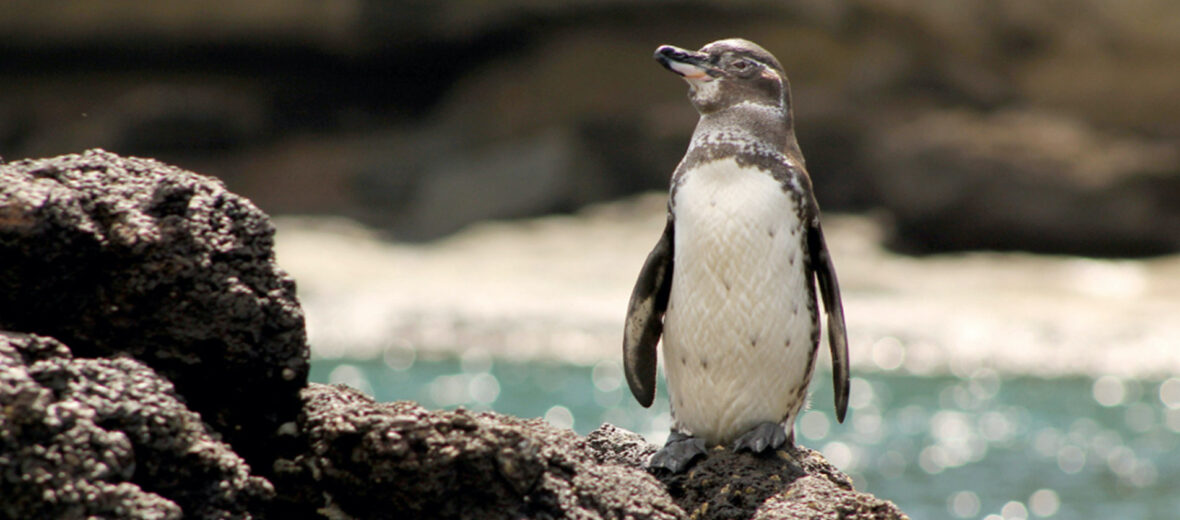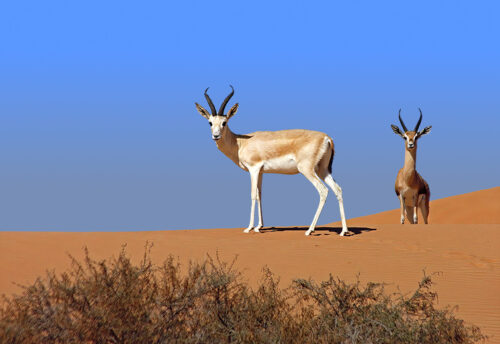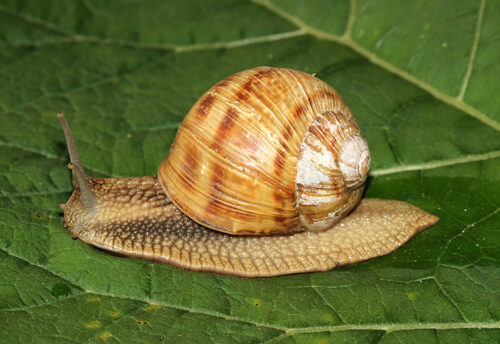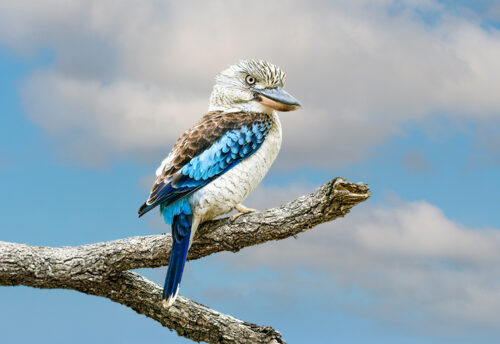
The Galápagos penguin is the smallest known warm climate penguin. As one would expect, these penguins can be found among the Galápagos Islands. The largest populations exist on Fernandina Island and the west coast of Isabela Island. They prefer both sandy and rocky beaches. As a result of the El Niño Southern Oscillations (changes in water temperature causing a rapid decline of food sources), pollution, human interference, invasive species, hunting, and overfishing, these penguins are listed as Endangered. There are only an estimated 1,200 remaining in the wild, to date, and their populations are decreasing.
First the Stats…
Scientific name: Spheniscus mendiculus
Weight: Up to 5.7 lbs.
Length: Up to 1.7 feet
Wingspan: Up to 1.1 feet
Lifespan: Up to 20 years
Now on to the Facts!
1.) They are the only penguin that lives north of the equator.
2.) These penguins not only walk with their flippers extended outward, to expel excess heat, but they also walk slightly hunched, in order to shade their feet from the hot ground.
3.) Like other penguins, Galápagos penguins are diurnal (active during the day).
4.) They are social birds that gather in large colonies for protection against predators.
5.) A group of penguins is called a huddle, convent, waddle, rookery, colony, or raft.
But wait, there’s more on the Galápagos penguin!
6.) The Galápagos penguin is a piscivore (eats fish), like all penguins. They prey on sardines, pilchards, mullets, and anchovies. They will also eat squid.
7.) As is the case with many penguins, they are predominantly monogamous (mate for a long duration with the same partner – but will sometimes switch partners in time, or if their partner dies).
Did you know…?
Galápagos penguins can swim up to 15 mph!
8.) Females lay up to 2 eggs, each breeding season.
9.) They build their nest in caves or volcanic-formed hollows that provide protection from the hot sun.
10.) Both parents partake in incubation duties and in the rearing of their young.
But wait, there’s still more on the Galápagos penguin!
11.) These penguins have the lowest population numbers of all known penguins.
12.) In an effort to avoid predation, they will enter and leave the water in large groups.
Did you know…?
They are able to propel themselves from the water at heights of up to 7+ feet! This is called porpoising. It is a tactic used to avoid and confuse oceanic predators.
13.) Due to their short legs, they tend to walk with a waddle, while on land.
14.) Galápagos penguins molt 2 times a year. Each molt takes approximately 13+ days to complete.
15.) Their land predators are cats, dogs, and rats. They kill the chicks, ruin their nests, and spread disease. Other land-based predators include: crabs, snakes, short-eared owls, and Galápagos hawks. In the water, they face predation via sharks, fur seals, and sea lions.
Now a Short Galápagos Penguin Video!
Be sure to share & comment below! Also, check out the Critter Science YouTube channel. Videos added frequently!
Want to suggest a critter for me to write about? Let me know here.



